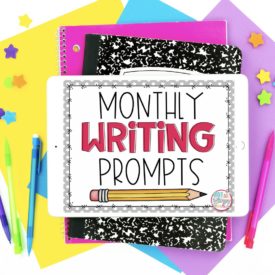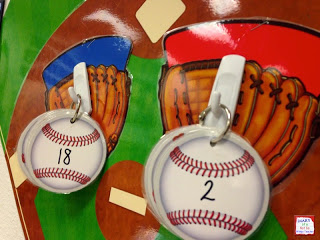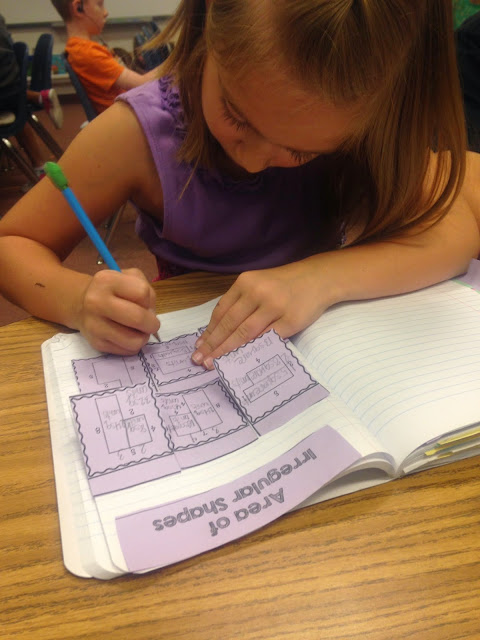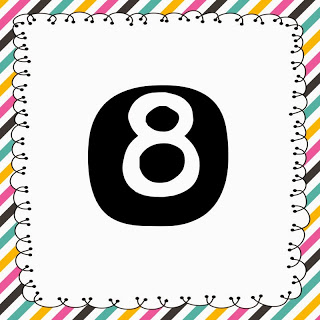This was my first year of using Whole Brain Teaching in the classroom. It was such an amazing change in classroom management and student collaboration. I loved teaching the classroom rules. Each rule has a hand gesture and the kids practiced teaching each other. When I noticed that the class was a little chatty, I would just say “Rule #2!” The class would says, “Rule #2: Raise your hand for permission to speak.” While they said it, they did the hand gesture. This is much more effective and fun than saying “Shhhh!” I had to do it A LOT at the start of the year and very rarely after that.
The part of Whole Brain Teaching that I loved the most was Teach-Okay. Basically, the teacher says something (only a sentence or two), then claps and says “Teach.” The students clap and say “Okay.” They turn to the person closest to them and teach their partner what the teacher said. I only gave a few seconds and then called them back with “Class. Class.” I would do this constantly! I might call one every few minutes. The kids knew they had to be listening because otherwise they wouldn’t be able to teach their partner. It also gave kids an acceptable time to talk. They couldn’t just chit chat, but some kids just need to be able to use their voice. This whole strategy is a pair-share on steroids. I will never go back…
This year I pushed my kiddos to reach their goals through data tracking! They would set quarterly goals, track their progress and then reflect at the end of the quarter. Data tracking put learning in the hands of students. It improved their motivation and willingness to work hard.
At the beginning of the quarter, every student would set goals.
Throughout the quarter they will graph everything from reading fluency, math facts, spelling tests and each of the Common Core math and ELA domains. Students are always working to improve on their last score. It is very visual. They can easily see when they make improvements and when they need to work harder. They also come in handy during parent conferences.
You can find my second grade and third grade data tracking charts in my store.
Book clubs made my guided reading groups more meaningful for my students and so much easier for this teacher to prep and plan for! I have done them in the past, but this was the first year that I did them with all of my reading groups and used both fiction and nonfiction chapter books.
I choose a different book for each of my guided reading groups. I was able to pick books that best met the reading levels and interests of the students in the group. I could never do that when I was using the readers that came with our basal.
I keep the books in tubs for each group. When they come back to meet with me, we read aloud together. I do not assign jobs like some do. I do not do this because I prefer to use my book clubs to practice our weekly target skill. So when we are learning about character traits, I want ALL of my kids to be thinking and writing about character traits- not just the one assigned to be the character captain. We use my book club graphic organizers as a reading response.
My students would litterly moan if I had to cancel book clubs for any reason. They were so engaged and invested in the text. When we would finish a book in clubs, students would rush to the library to get the next in the series! You can click HERE to read more about how I inspire life-long readers in my classroom.
I simplified classroom jobs this year and it makes things much easier for me! I used to be one of those teachers that had a bunch of jobs and rotated kids through the jobs. This was a pain because I had to remember to change the jobs every week. I also had to train the students on each job. Since they only had it every once in a while, many students would forget how to complete the task. And in reality- I didn’t use all of the jobs. The student had the job in name only. Anyone else have this problem?
This year I put my student numbers on baseballs. I split them into two groups and hung them on the wall. Everyday, I flipped the two balls. The two numbers would be the two students who were my helpers for the entire day. They did anything I needed.
Each student got to be the helper more often, I didn’t have a bunch of jobs that I didn’t need and it took less time to train my students. I didn’t have to spend valuable class time at the beginning of every week going over job assignments.
I have been using interactive notebooks for a couple of years. This year, I feel like I really used interactive notebooks to their fullest potential. I used my notebooks for informal assessment. Students would do the activities during guided small groups and I would peak at their answers. I was able to quickly decide if the group needed a reteach, if a student needed to be moved to a different group or if a group needed some enrichment. Quick peaks during small group also mean that I didn’t have huge stacks of notebooks to grade!
If a student showed mastery with the notebook activity, I would check them off on my standards mastery checklist. The checklist was used to plan and guide future instruction.
Interactive notebooks weren’t working well for me in the past because they were taking too much time. Click HERE to read about some time savers that made interactive notebooks so much more successful this year.
One of the professional goals that I set for myself this year was to keep my guided groups fluid. I wanted to be certain that students were in the correct group ALL year and not just after testing and screening. Student groups changed all year. I wanted my students to always know what group they were in and what center they should be at. I needed them to have a reference that was not hard for me to keep up with. So I made blank posters for each reading and math group. At the bottom, they list the center rotations for that particular group. I laminated the posted. Then I used dry erase markers to list the students in each group. This made it super simple to change out groups weekly or at the end of a unit.
A simple change that made me a more accountable and differentiated teacher!
As a parent and a teacher I despise homework. As a parent I don’t like homework because my kids come home from school tired and it makes homework time very trying. This is not how I want to spend our family time. As a teacher I don’t like homework because it takes a lot of time to prep and grade. Some kids get help at home and some kids just get their homework wrong every day. Even though I dislike homework, I know that it can be a valuable way to communicate with parents.
This year I decided to use weekly homework packets rather than nightly homework. I staple together 3-4 math sheets and a language sheet. The students get the packet on Monday and it is due on Friday. This gives parents the flexibility to decide how much time to devote to homework each night based on their schedule and their child. Some get it done on Monday and Tuesday and take the rest of the week off! It also means that I only have to check in homework once per week. Huge time saver!
I also attempted to deal with the issue of students not being able to successfully complete homework on their own. If I taught lessons 1-4 this week, I would send those homework sheets home the following week. This gave students more time in class to practice the skill before they had to do it independently without my support. I think this was a HUGE help!
I have a weekly language skill that I teach and assess. This year, I used tasks cards and scoots to test all of my language skills. It was a fantastic Friday activity because kids barely noticed that they were being tested!
Brain research shows that we are more focused and remember more of what we learn when we are moving. This form of assessment was quick, quiet, meaningful and FUN!
I had so much fun reflecting on my school year! What went well in your classroom this year?






































 End of Year Carnival Week for grades 2-5!
End of Year Carnival Week for grades 2-5!
Thank you for sharing your ideas! There are so many I want to keep in mind for next year. I absolutely love your idea to simplify classroom jobs and utilize two students as the special helpers for the day. I always lose track of which student has done which job and this would eliminate that problem so easily. I will be working on that for next year!
Enjoy your weekend!
Jayme
Teach Talk Inspire
Where can I get your book club graphic organizers?
There is a live link in the post, or you can cut and paste this link:
https://www.teacherspayteachers.com/Product/Book-Club-Fiction-and-Nonfiction-Bundle-1868209
Thanks so much for sharing this great summary. I love your practical ideas!